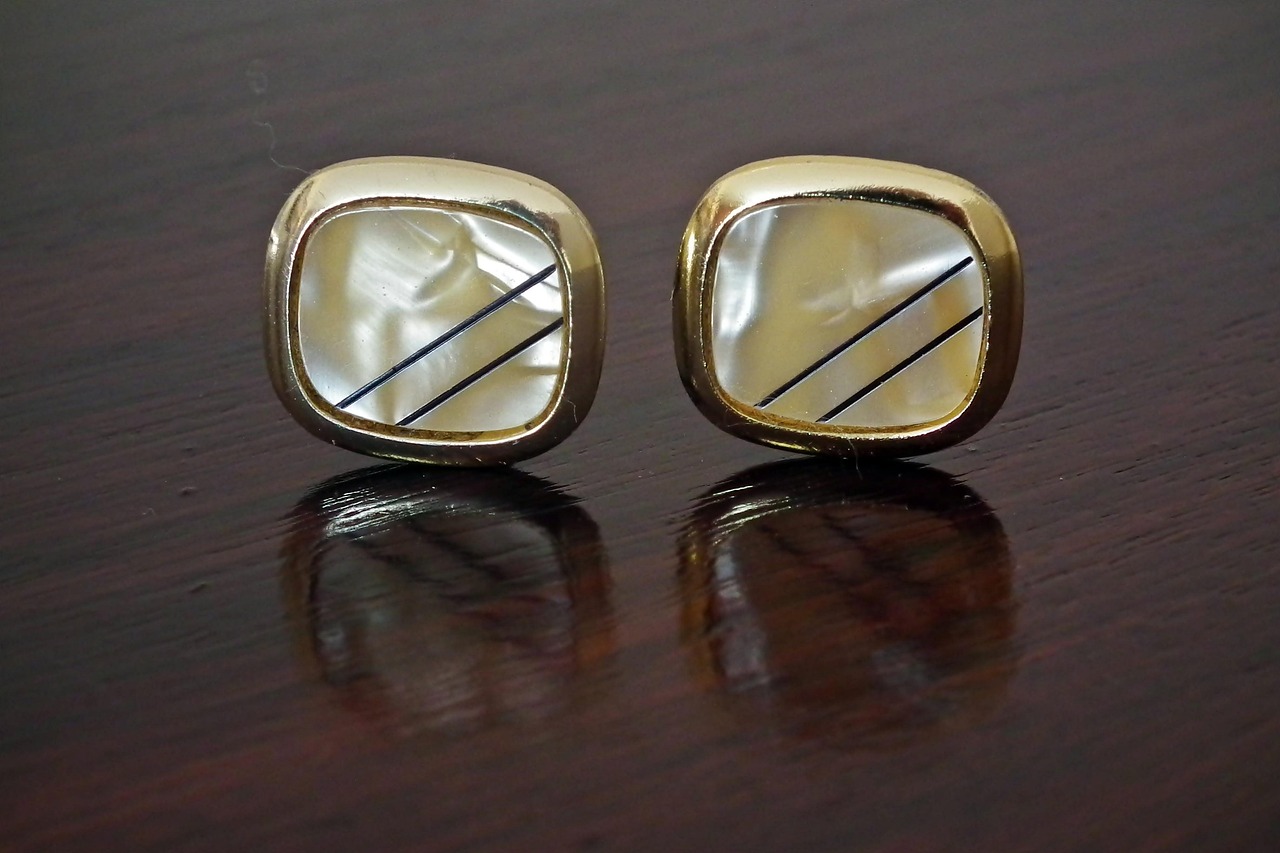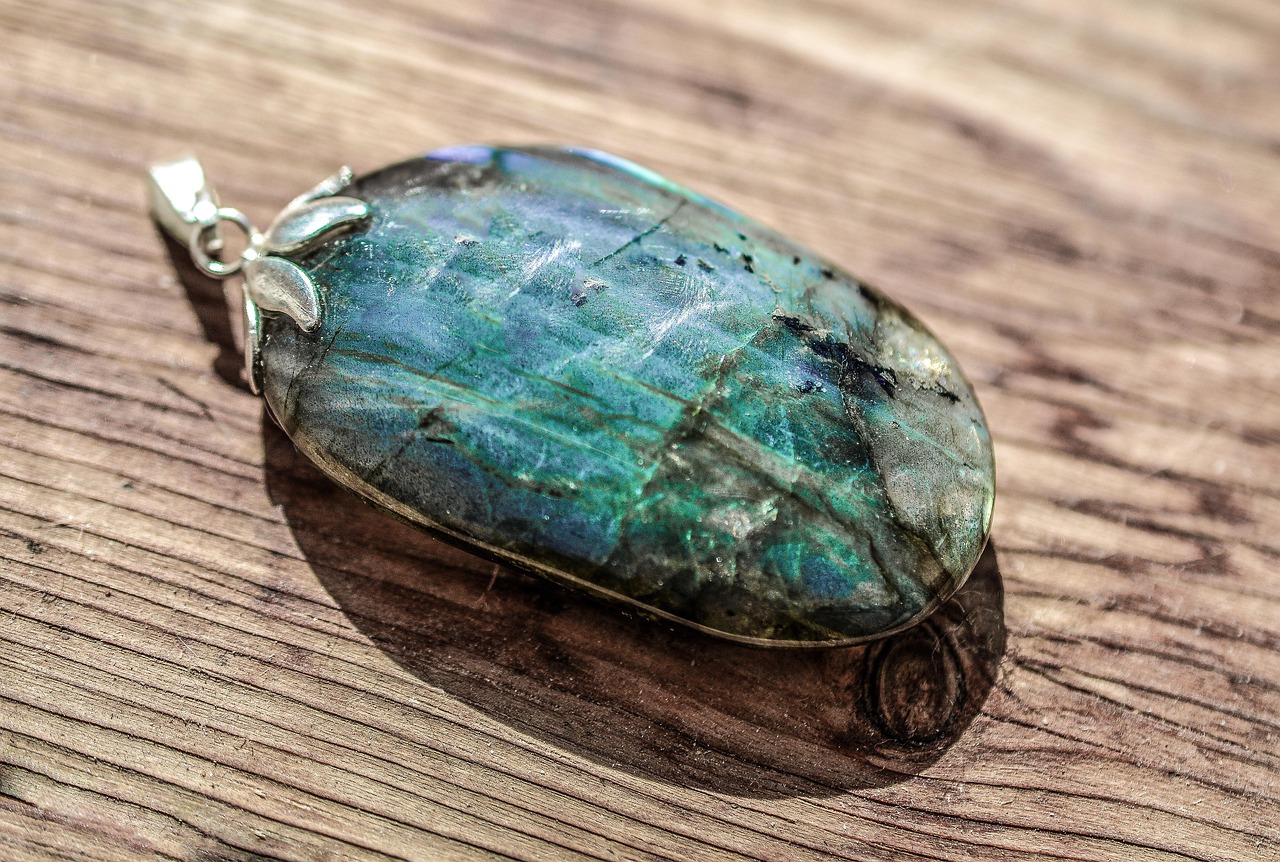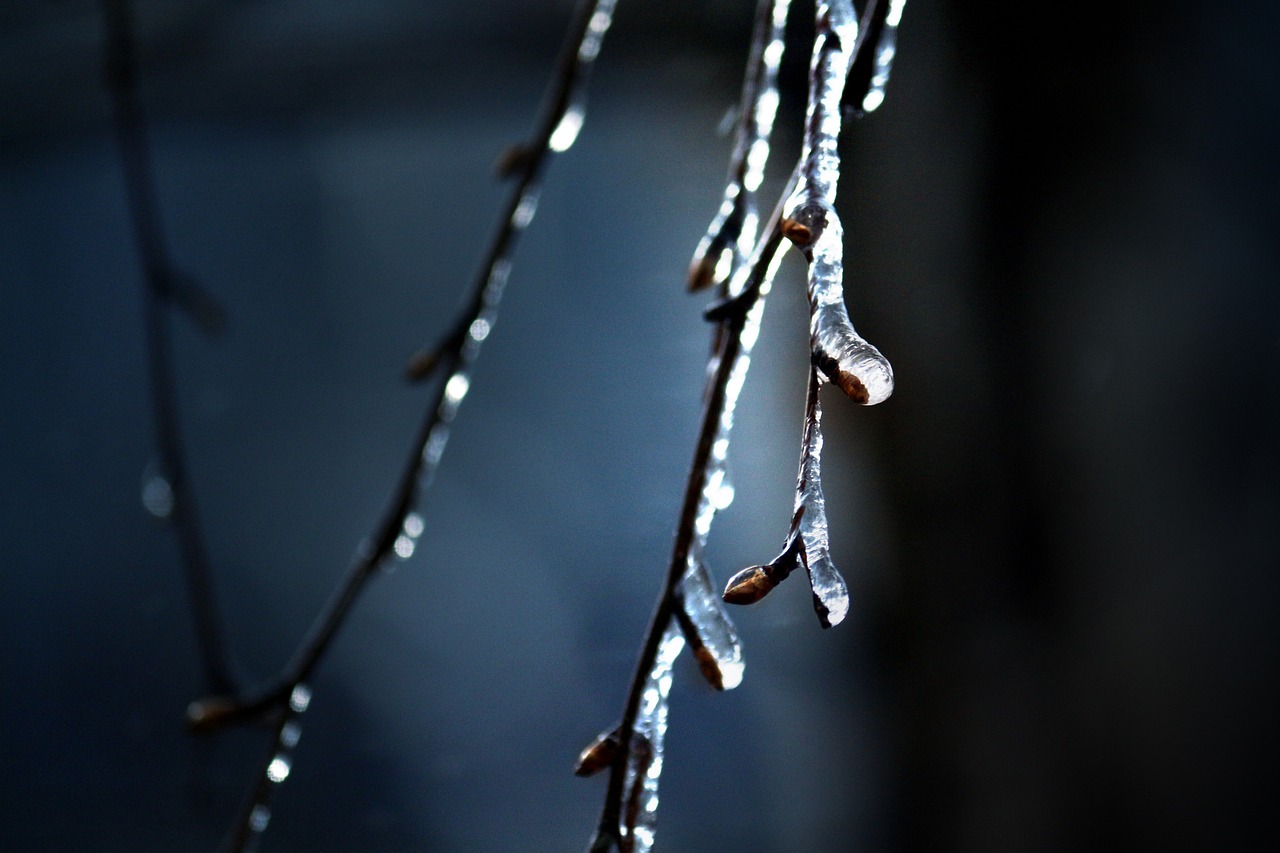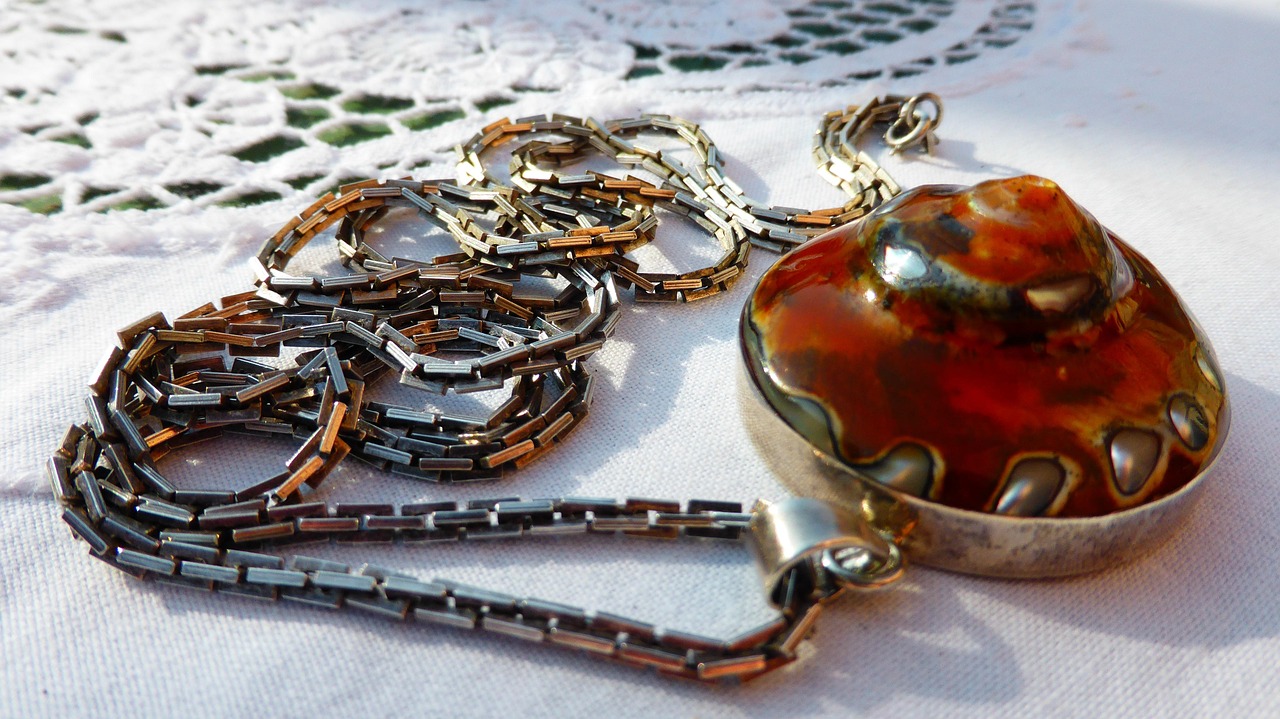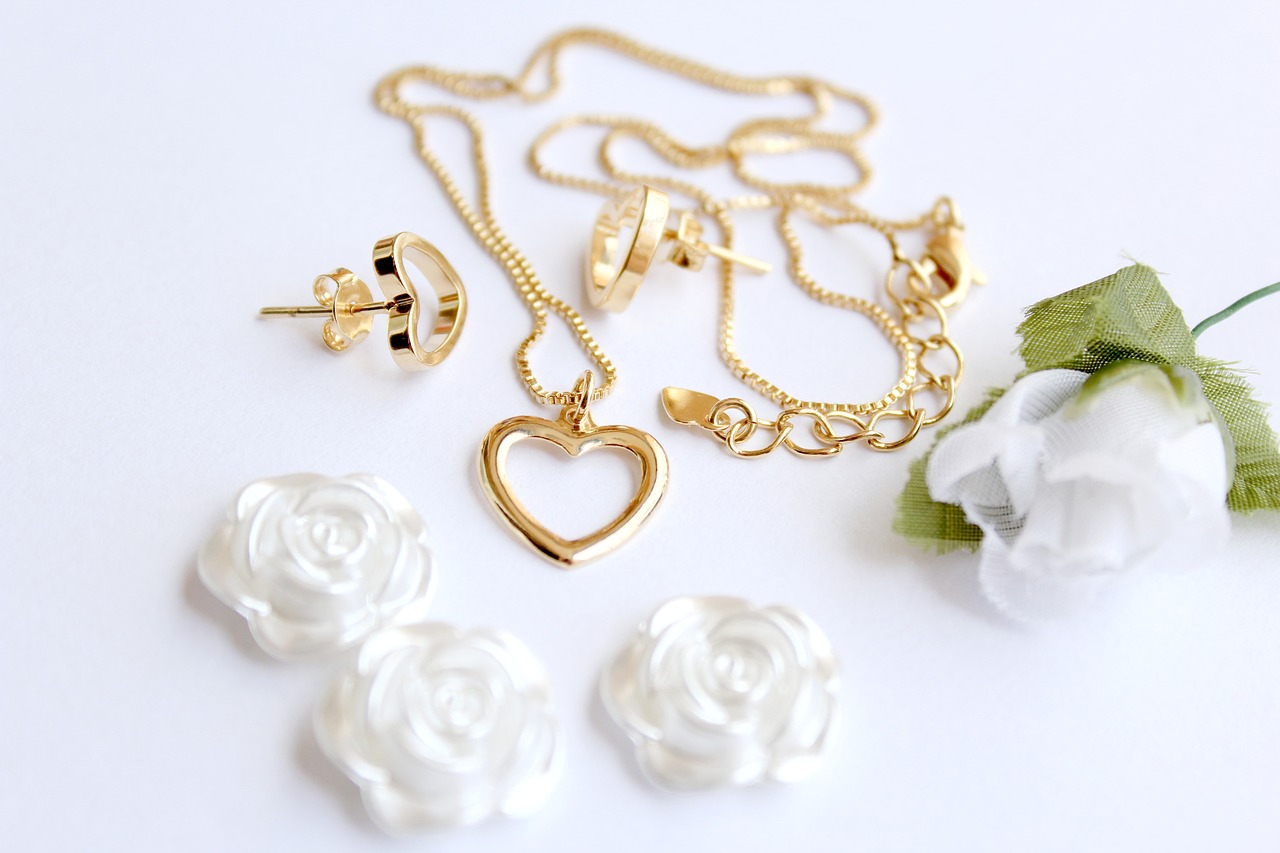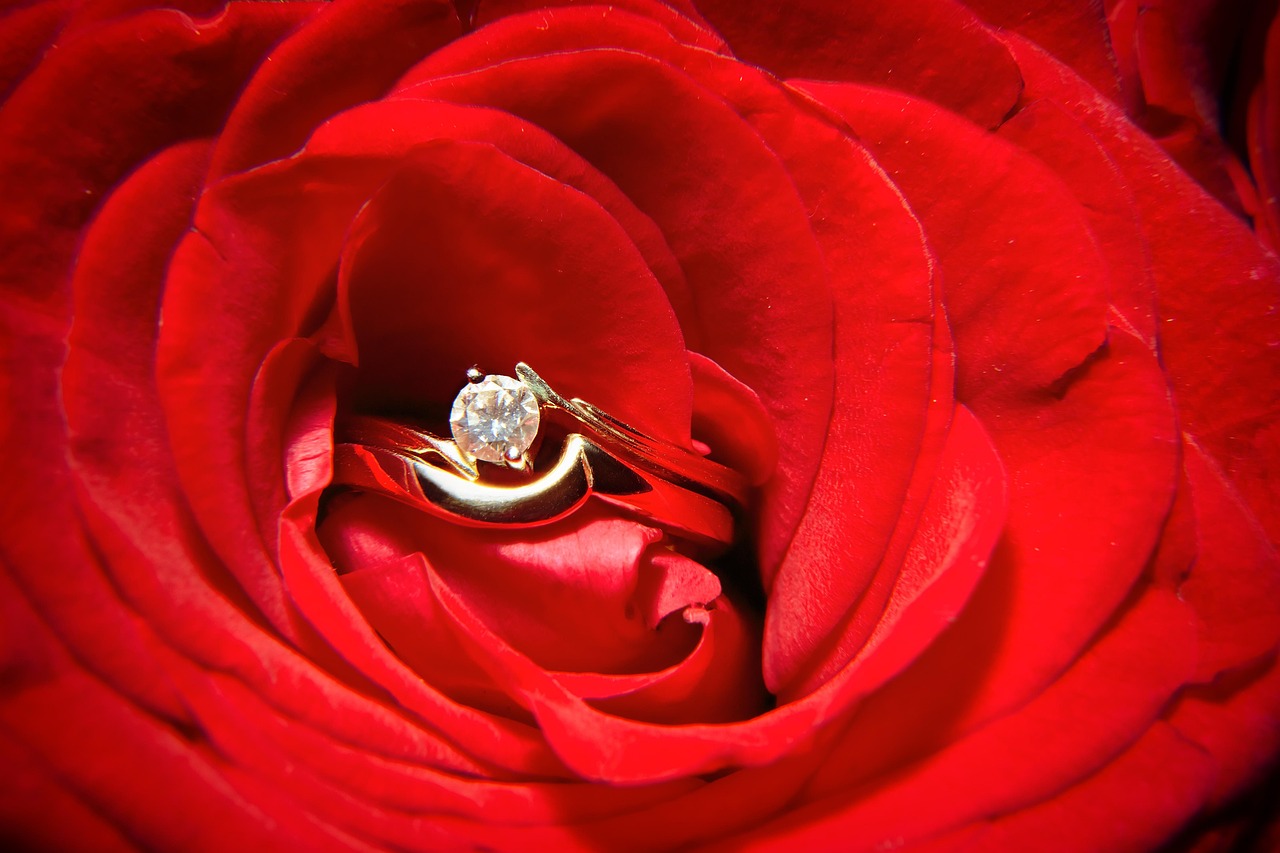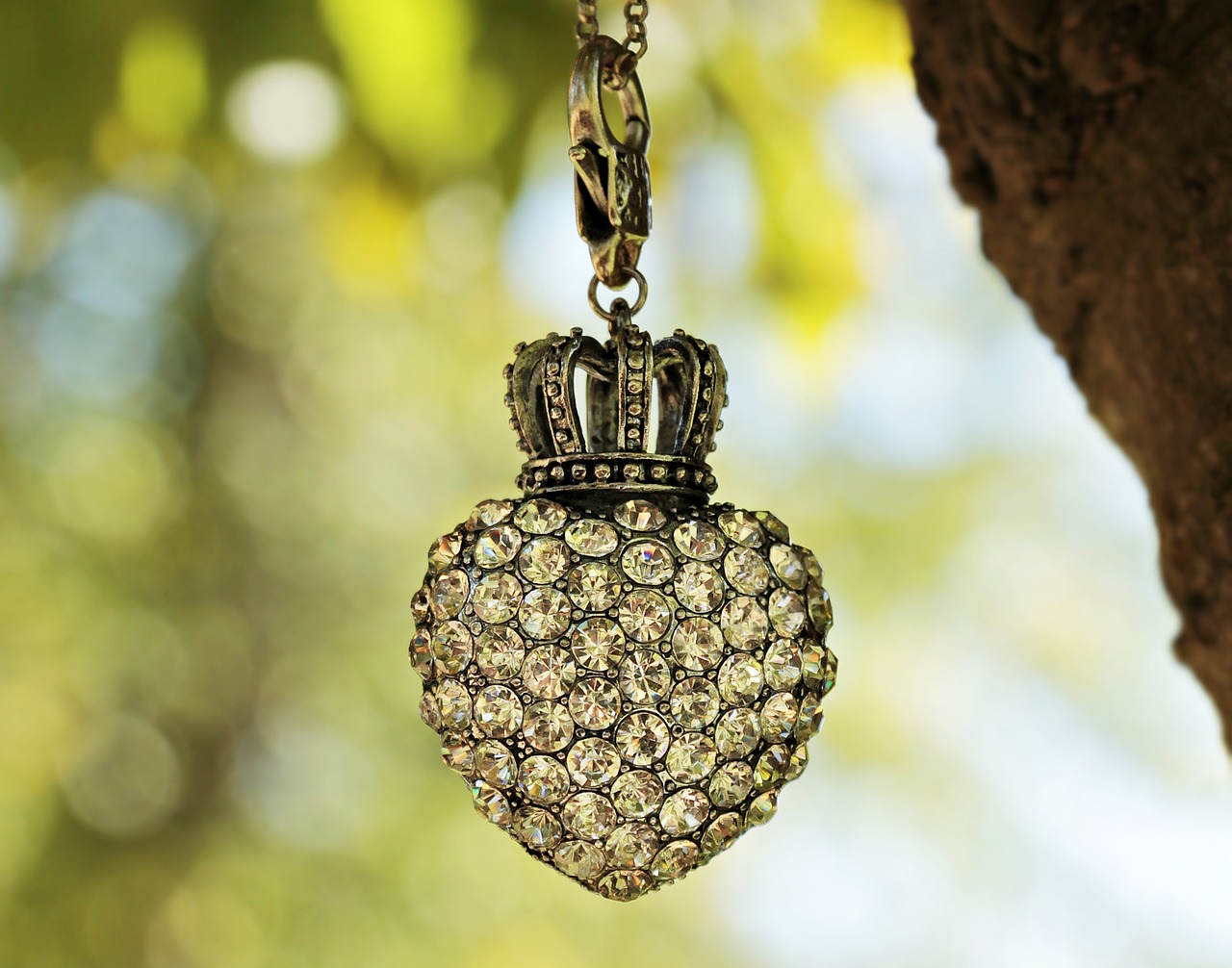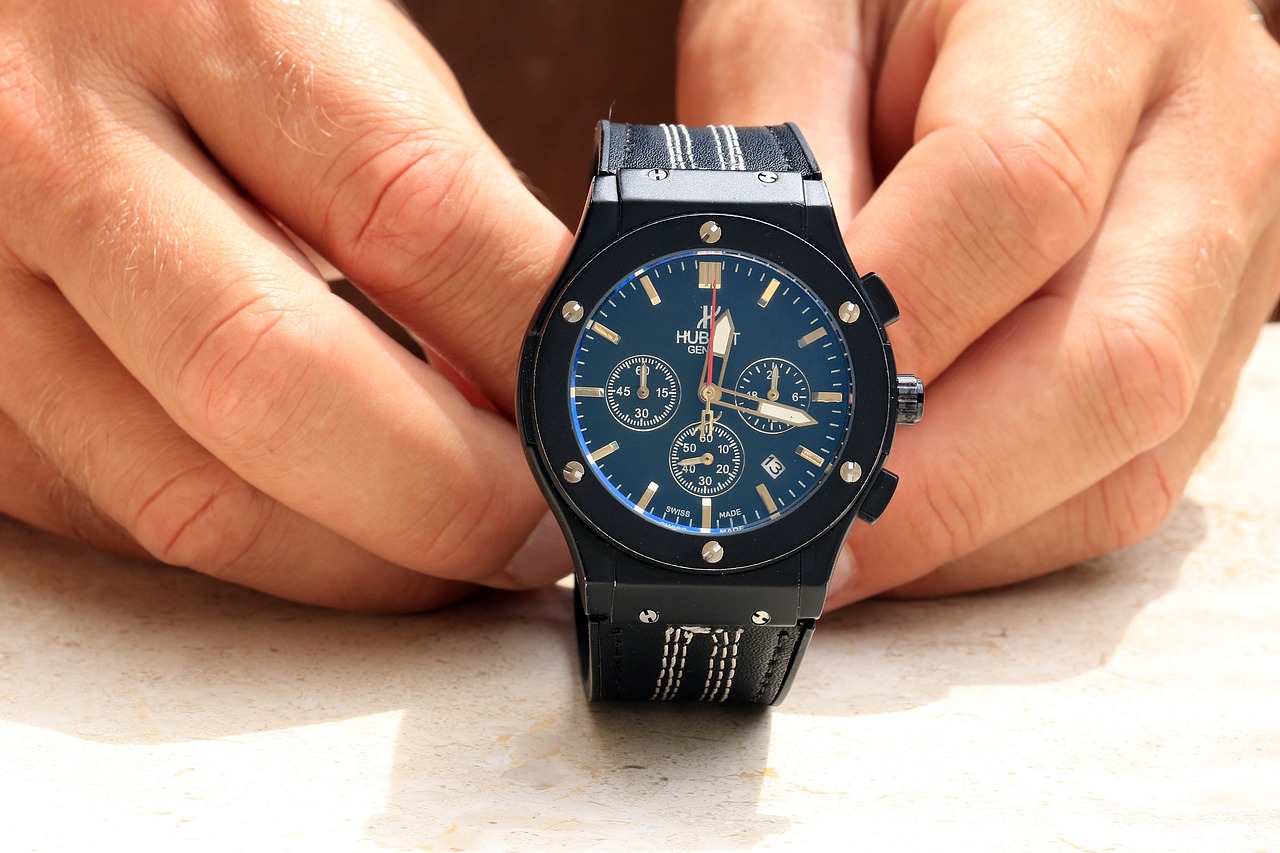This article explores safe and effective methods for cleaning jewelry at home, ensuring that your precious items remain sparkling without the risk of damage. Maintaining the beauty and integrity of your jewelry is essential, and with the right techniques, you can achieve this without professional help.
Why Is Jewelry Cleaning Important?
Understanding the importance of jewelry cleaning can help maintain its beauty and longevity. Regular cleaning prevents tarnishing and buildup, preserving the integrity of your favorite pieces. Neglecting this task can lead to dullness and, in some cases, irreversible damage.
What Are the Common Jewelry Cleaning Methods?
There are several common methods for cleaning jewelry, each suited for different materials. Knowing which method to use can help you avoid damaging your items. Below are some popular techniques:
- Using Soap and Water: A simple soap and water solution is effective for many types of jewelry. This method is gentle yet thorough, making it ideal for everyday cleaning.
- Utilizing Baking Soda: Baking soda is a natural cleaner that can effectively remove tarnish, particularly from silver jewelry, restoring its shine without harsh chemicals.
- Vinegar and Water: This mixture can also help in removing tarnish, especially on copper and brass items.
What Tools Do You Need for Jewelry Cleaning?
Having the right tools on hand can make the cleaning process easier and more effective. Here are essential items to consider for proper jewelry maintenance:
- Soft Brushes and Cloths: Invest in soft brushes and microfiber cloths. These tools help clean intricate designs without scratching the surface.
- Ultrasonic Cleaners: These devices offer a deeper clean by using sound waves to remove dirt. However, they may not be suitable for all types of jewelry, so caution is advised.
Which Jewelry Materials Require Special Care?
Different materials have unique cleaning requirements. Understanding these can help you avoid damaging your jewelry while ensuring it stays beautiful:
- Cleaning Gold and Silver Jewelry: Gold and silver are relatively easy to clean but require specific methods to avoid scratches and tarnishing. Regular maintenance can keep them looking new.
- Handling Gemstones and Pearls: These are more delicate and need gentle cleaning. Using the wrong method can lead to damage, so it’s essential to know how to care for them properly.
What Mistakes Should You Avoid When Cleaning Jewelry?
Avoiding common mistakes is crucial to maintaining the integrity of your jewelry. Here are pitfalls to watch out for during the cleaning process:
- Using Harsh Chemicals: Harsh chemicals can cause irreversible damage to your jewelry. Always opt for gentle cleaning solutions to preserve your pieces.
- Skipping Regular Maintenance: Neglecting regular cleaning can lead to significant buildup and tarnishing. Establishing a routine can help keep your jewelry in pristine condition.
How to Store Jewelry Properly After Cleaning?
Proper storage after cleaning is essential for maintaining your jewelry’s shine and preventing damage. Here are tips for effective jewelry storage:
- Using Anti-Tarnish Pouches: These are great for silver jewelry, helping to prevent tarnishing. Store your pieces in these pouches for long-lasting shine.
- Organizing Jewelry by Type: Organizing your jewelry by type can prevent scratching and tangling. Consider using separate compartments or boxes for different materials.
When Should You Seek Professional Cleaning Services?
While home cleaning is effective, certain situations may require professional attention. Knowing when to seek help can save your jewelry from damage:
- Restoring Heavily Tarnished Items: If your jewelry is heavily tarnished or damaged, professional cleaning can restore its beauty. Experts have the tools and knowledge to handle delicate repairs safely.
- Repairing Damaged Pieces: For jewelry that has broken or lost stones, seeking a professional jeweler is essential. They can provide the necessary repairs to restore your cherished items.
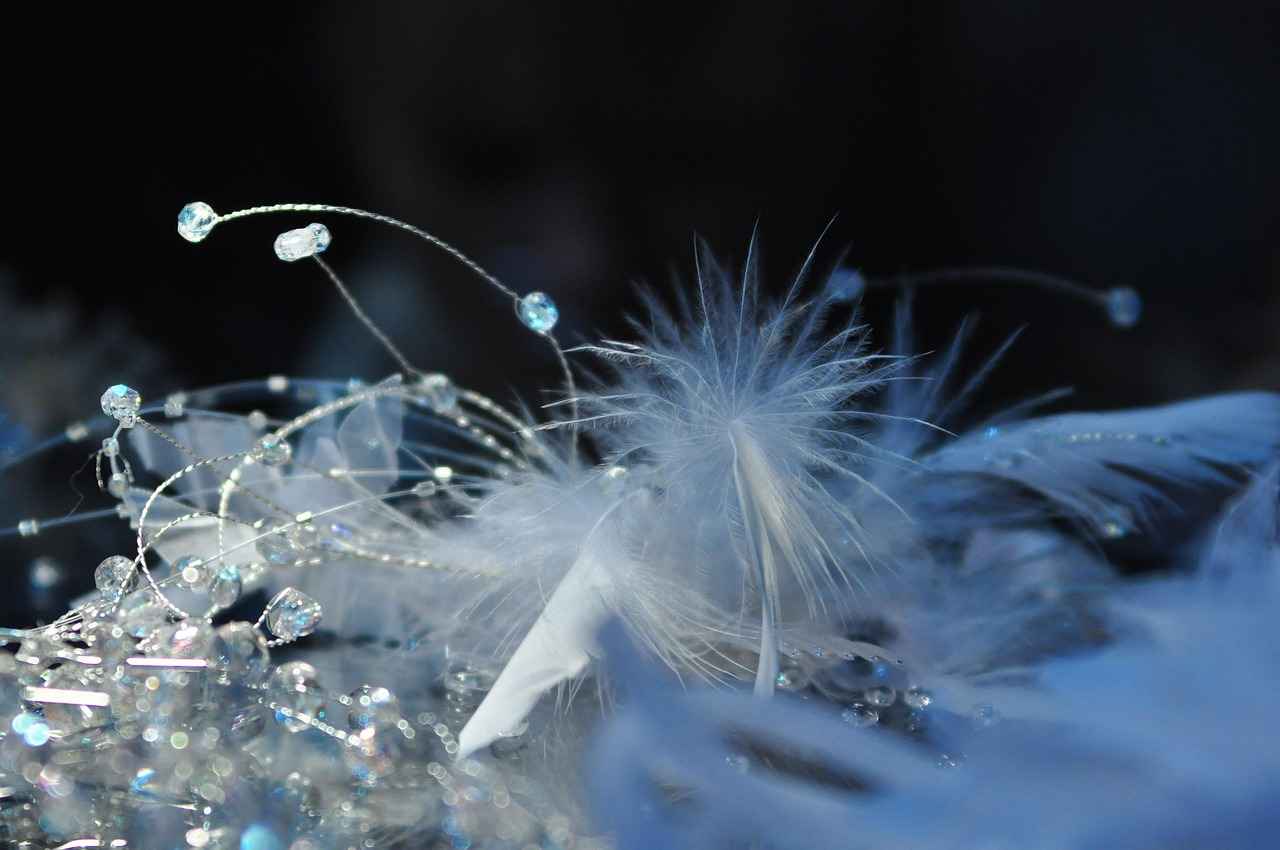
Why Is Jewelry Cleaning Important?
Jewelry is not just an accessory; it holds sentimental value and represents personal milestones. Therefore, understanding why jewelry cleaning is important is crucial for preserving its beauty and longevity. Regular maintenance not only enhances the visual appeal of your favorite pieces but also protects your investment over time.
Jewelry cleaning is essential for several reasons:
- Prevents Tarnishing: Metals like silver and gold are prone to tarnishing due to exposure to air, moisture, and skin oils. Regular cleaning helps to remove tarnish and restore shine.
- Removes Dirt and Buildup: Everyday wear can lead to the accumulation of dirt, dust, and oils. A thorough cleaning process removes these contaminants, ensuring that your jewelry remains sparkling.
- Preserves Gemstone Integrity: Gemstones can become dulled or scratched over time. Proper cleaning techniques help maintain their clarity and brilliance.
- Enhances Lifespan: By regularly cleaning your jewelry, you can prevent damage that may occur from neglect. This maintenance extends the life of your cherished pieces.
Additionally, regular cleaning allows you to inspect your jewelry for any signs of wear or damage. This proactive approach enables you to address issues before they escalate, potentially saving you from costly repairs.
The frequency of cleaning depends on several factors, including how often you wear the jewelry and the type of materials involved. Generally, it’s advisable to clean your jewelry:
- Daily: For items worn every day, like wedding rings, a quick wipe with a soft cloth can be beneficial.
- Weekly: For jewelry worn occasionally, a more thorough cleaning with soap and water is recommended.
- Monthly: Consider a deep clean for items that are rarely worn, especially those with intricate designs or gemstones.
Neglecting to clean your jewelry can lead to a range of issues:
- Tarnish Build-up: Over time, tarnish can become more difficult to remove, requiring professional cleaning or even restoration.
- Loss of Value: Dirty or damaged jewelry can lose its aesthetic appeal and, consequently, its market value.
- Increased Risk of Damage: Dirt and grime can cause scratches on surfaces and weaken settings, increasing the likelihood of losing stones.
By understanding the importance of jewelry cleaning, you can take proactive steps to ensure your pieces remain as stunning as the day you acquired them. Regular maintenance will not only enhance their beauty but also preserve their sentimental and monetary value.
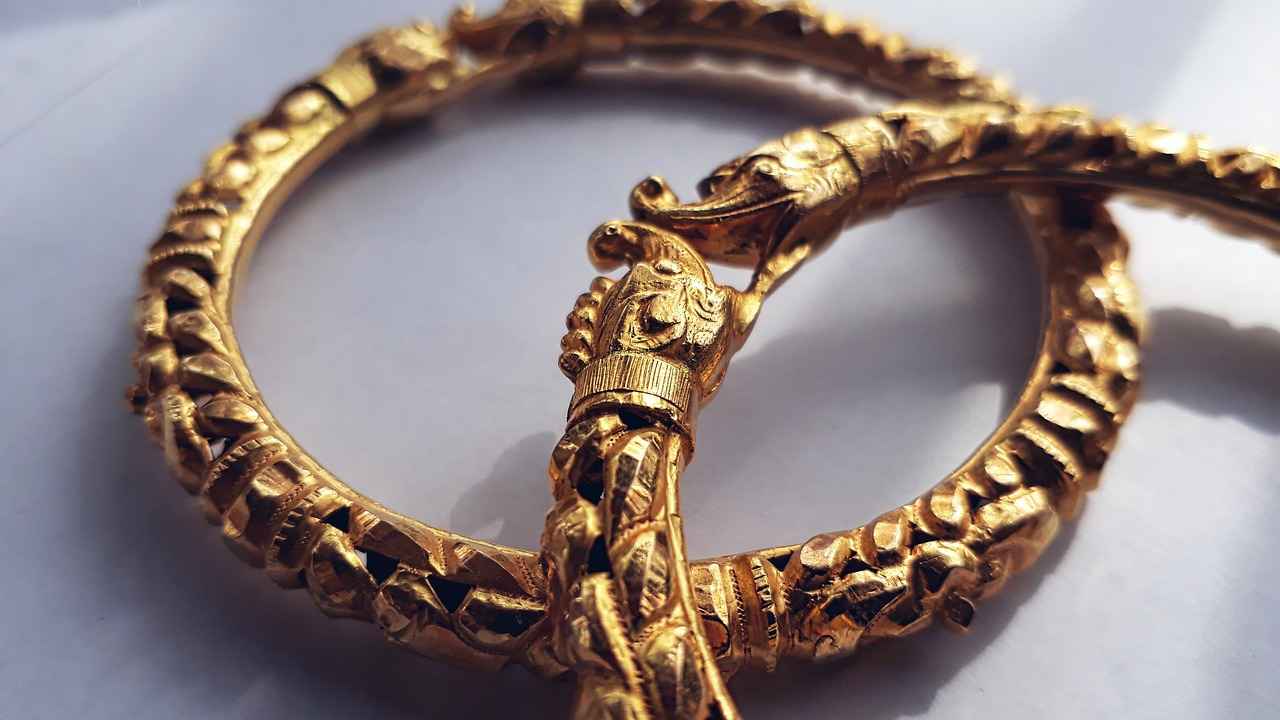
What Are the Common Jewelry Cleaning Methods?
When it comes to maintaining the beauty and integrity of your jewelry, understanding the various cleaning methods is essential. Different materials require specific approaches to ensure they remain in pristine condition. In this section, we will explore common jewelry cleaning methods that are both effective and safe for a variety of materials.
There are several common methods for cleaning jewelry, each suited for different materials. Knowing which method to use can help you avoid damaging your items.
- Soap and Water: This is the most straightforward method and works well for most types of jewelry, including gold, silver, and gemstones. To use this method, mix a few drops of mild dish soap in lukewarm water. Soak your jewelry for a few minutes, then gently scrub with a soft brush to remove dirt and grime. Rinse thoroughly and dry with a soft cloth.
- Baking Soda Paste: For tarnished silver jewelry, a paste made from baking soda and water can be highly effective. Mix three parts baking soda with one part water to create a paste. Apply it to the tarnished areas, gently rub with a soft cloth, and rinse well. This method is safe and natural, ensuring your jewelry retains its shine.
- Vinegar and Baking Soda: This method is particularly useful for cleaning silver jewelry. Combine half a cup of vinegar with two tablespoons of baking soda in a bowl. Submerge your jewelry for two to three hours, then rinse and dry. This solution effectively removes tarnish without harsh chemicals.
- Ultrasonic Cleaners: For a deep clean, ultrasonic cleaners use sound waves to agitate a cleaning solution, effectively removing dirt from intricate designs. However, caution is advised, as not all jewelry can withstand ultrasonic cleaning, especially those with delicate stones.
- Professional Cleaning: When in doubt, or for heavily tarnished or damaged pieces, seeking professional cleaning services is a wise choice. Jewelers have specialized tools and expertise to safely restore your jewelry to its former glory.
Understanding the specific needs of your jewelry is crucial. For example, while gold and silver can be cleaned using soap and water, gemstones and pearls require more delicate handling. Always check the manufacturer’s recommendations for cleaning to avoid any damage.
It’s also important to consider the environment in which you wear your jewelry. If you frequently wear items while cooking or exercising, regular cleaning may be necessary to combat buildup from oils, sweat, and other substances.
Having the right tools can make your cleaning process easier and more effective. Here are some essential items to consider:
- Soft Brushes: A soft-bristled toothbrush or a dedicated jewelry cleaning brush can help you reach intricate designs without scratching the surface.
- Microfiber Cloths: These are perfect for drying and polishing your jewelry without leaving lint or scratches.
- Bowls for Soaking: Use non-metallic bowls for soaking your jewelry in cleaning solutions to prevent any reactions.
By following these methods and tips, you can keep your jewelry looking beautiful and well-maintained. Regular care not only enhances the appearance of your pieces but also extends their lifespan, allowing you to enjoy them for years to come.
Using Soap and Water
is one of the most effective and gentle methods for cleaning various types of jewelry. This technique is not only simple but also safe, making it an ideal choice for everyday maintenance of your precious items.
One of the primary reasons to use a soap and water solution is its gentleness. Unlike harsh chemicals that can cause damage, soap and water provide a thorough clean without risking the integrity of delicate pieces. This method is particularly beneficial for jewelry that is worn frequently, as it helps to remove dirt, oils, and residues that accumulate over time.
When selecting a soap for cleaning jewelry, it is essential to choose a mild dish soap or a gentle hand soap. Avoid products that contain strong fragrances or additives, as these can be abrasive to certain metals and stones. A simple, unscented formula is often the best choice to prevent any potential reactions or damage.
To effectively clean your jewelry using this method, follow these simple steps:
- Gather Your Supplies: You will need a small bowl, lukewarm water, mild soap, and a soft brush or cloth.
- Prepare the Solution: Mix a few drops of soap into the lukewarm water until it is well combined.
- Soak the Jewelry: Place your jewelry in the soapy water for about 10-15 minutes. This soaking helps to loosen any dirt or grime.
- Gently Scrub: Using a soft brush, gently scrub the jewelry, paying special attention to crevices and intricate designs. Be sure to use light pressure to avoid scratching.
- Rinse Thoroughly: After scrubbing, rinse the jewelry under lukewarm running water to remove any soap residue. Ensure that you close the drain or use a strainer to prevent losing any small pieces.
- Dry Carefully: Pat the jewelry dry with a soft cloth. Avoid using paper towels as they can scratch certain surfaces.
For the best outcomes when cleaning your jewelry with soap and water, consider these additional tips:
- Frequency: Regular cleaning can prevent buildup and keep your jewelry looking its best. Aim for a gentle clean every few weeks, especially for pieces worn daily.
- Inspect Before Cleaning: Before you start, check for any loose stones or damage. If you notice any issues, it’s best to consult a professional before cleaning.
- Store Properly: After cleaning, store your jewelry in a dry, cool place to prevent tarnishing and damage.
In summary, using a soap and water solution is a simple yet effective method for maintaining the beauty of your jewelry. This approach not only ensures a thorough clean but also protects your cherished items from potential harm. By following the steps outlined above and incorporating regular cleaning into your routine, you can keep your jewelry sparkling and in excellent condition for years to come.
Choosing the Right Soap
When it comes to cleaning your jewelry, is a critical step that should not be overlooked. Many people might think that any soap will do, but this is far from the truth. The soap you select can significantly impact the longevity and appearance of your cherished items. Using a mild dish soap or gentle hand soap is essential because harsh chemicals can be detrimental to delicate metals and gemstones.
Jewelry often contains a variety of materials, from precious metals like gold and silver to softer gemstones and pearls. Each of these materials requires a specific cleaning approach to avoid damage. Harsh chemicals found in many soaps can lead to tarnishing, discoloration, or even structural damage.
A mild soap typically contains fewer harsh chemicals and is free from additives that can harm your jewelry. Look for soaps that are biodegradable and free from fragrances and dyes. These ingredients can leave residues that dull the shine of your jewelry. A gentle formula will ensure your pieces remain as beautiful as the day you bought them.
- Patch Test: Before using a new soap, apply a small amount to a discreet area of your jewelry to see if there’s any adverse reaction.
- Read the Label: Check for terms like “gentle,” “non-toxic,” or “hypoallergenic” on the label.
- Consult Experts: If unsure, seek advice from jewelers or professionals who can recommend suitable products.
Here are some examples of mild soaps that are generally safe for cleaning jewelry:
- Castile Soap: A plant-based soap that is gentle on both skin and jewelry.
- Baby Soap: Formulated for sensitive skin, making it a safe choice for cleaning delicate pieces.
- Liquid Hand Soap: Opt for unscented and dye-free varieties.
Once you’ve selected an appropriate soap, follow these steps for effective cleaning:
1. Mix a few drops of mild soap with lukewarm water in a bowl.2. Soak your jewelry for a few minutes to loosen dirt and grime.3. Use a soft-bristled brush to gently scrub intricate areas.4. Rinse thoroughly under lukewarm water to remove all soap residues.5. Pat dry with a soft, lint-free cloth.
While cleaning, there are several practices to avoid:
- Avoid Abrasive Cleaners: These can scratch and damage the surface of your jewelry.
- Don’t Soak for Too Long: Extended soaking can loosen settings and cause stones to fall out.
- Skip the Dishwasher: Never clean jewelry in the dishwasher, as the heat and harsh detergents can be harmful.
In summary, selecting a mild soap is not just a suggestion; it’s a crucial part of maintaining the beauty and integrity of your jewelry. By being mindful of the products you use, you can ensure your precious items remain in excellent condition for years to come.
Step-by-Step Process
Cleaning your jewelry at home can be a simple yet effective process that helps maintain its beauty and longevity. Among the various methods available, using soap and water stands out as one of the safest and most accessible options. Below, we will explore a detailed for cleaning your jewelry using this method, ensuring that you do it correctly without causing any damage.
- Gather Your Materials: Before you begin, make sure you have the following items on hand:
- A mild dish soap or hand soap
- Lukewarm water
- A soft-bristled brush (like a toothbrush)
- A clean, soft cloth for drying
- Prepare the Cleaning Solution: In a small bowl, mix a few drops of the mild soap with lukewarm water. Ensure that the water is not too hot, as extreme temperatures can cause damage to certain gemstones and metals.
- Soak Your Jewelry: Place your jewelry in the soapy water solution. Allow it to soak for about 15 to 20 minutes. This soaking period helps to loosen any dirt, oils, or buildup that may have accumulated on your pieces.
- Gently Scrub: After soaking, take your soft-bristled brush and gently scrub the jewelry. Pay special attention to intricate designs and settings where dirt may be trapped. Be careful not to apply too much pressure, especially on delicate pieces.
- Rinse Thoroughly: Once you have scrubbed your jewelry, rinse it under lukewarm running water. Make sure to do this over a bowl or sink strainer to avoid losing any small pieces. Rinsing removes any soap residue that could dull the shine of your jewelry.
- Dry Your Jewelry: After rinsing, pat your jewelry dry with a clean, soft cloth. Avoid using paper towels or rough fabrics, as these can scratch the surface of your items. Ensure that your jewelry is completely dry before storing it away.
Using soap and water is a gentle method suitable for most types of jewelry, including gold, silver, and some gemstones. Unlike harsh chemicals, this method minimizes the risk of damaging delicate materials. Regular cleaning not only enhances the appearance of your jewelry but also helps in identifying any potential issues, such as loose stones or weak clasps, before they become significant problems.
- Test First: If you are unsure about the suitability of this method for a specific piece, test it on a small, inconspicuous area first.
- Frequency: Clean your jewelry regularly, depending on how often you wear it. For frequently worn pieces, consider cleaning them once a month to keep them looking their best.
- Store Properly: After cleaning, ensure that your jewelry is stored in a dry, cool place, preferably in anti-tarnish pouches or lined boxes to prevent future tarnishing.
By following this step-by-step process, you can easily clean your jewelry at home while preserving its beauty and integrity. Remember, maintaining your jewelry not only enhances its appearance but also extends its lifespan, allowing you to enjoy your cherished pieces for years to come.
Utilizing Baking Soda and Water
Baking soda is a versatile and natural cleaner that works wonders for tarnished jewelry. Its gentle yet effective properties make it an ideal choice for cleaning silver, allowing you to restore its shine without resorting to harsh chemicals that can damage delicate pieces. This method is not only safe but also economical, making it a popular choice for jewelry enthusiasts.
When cleaning your silver jewelry, the first step is to create a baking soda paste. To do this, mix three parts baking soda with one part water until a thick paste forms. This paste can be applied directly to tarnished areas, where it will work to lift away the tarnish and grime that accumulates over time. The mild abrasiveness of baking soda helps to gently scrub away tarnish without scratching the surface of your jewelry.
Why Choose Baking Soda?
- Eco-Friendly: Baking soda is a natural substance, making it a safe alternative to chemical cleaners.
- Cost-Effective: It is inexpensive and readily available in most households.
- Non-Toxic: Unlike many commercial cleaners, baking soda poses no health risks.
Step-by-Step Cleaning Process
- Prepare the Paste: In a small bowl, combine baking soda and water to form a thick paste.
- Apply the Paste: Use a soft cloth or your fingers to apply the paste to the tarnished areas of your jewelry.
- Gently Scrub: With a soft-bristled toothbrush or a cloth, gently scrub the jewelry, focusing on intricate designs and crevices.
- Rinse Thoroughly: After scrubbing, rinse the jewelry under lukewarm water to remove all baking soda residue.
- Dry and Polish: Use a soft, lint-free cloth to dry and polish your jewelry, restoring its shine.
It’s important to note that while baking soda is safe for most silver jewelry, it may not be suitable for all types of gemstones or delicate materials. Therefore, always test a small area first or consult with a professional if you are unsure.
Additional Tips for Maintaining Your Jewelry
- Regular Cleaning: Establish a routine cleaning schedule to prevent buildup and maintain the beauty of your jewelry.
- Proper Storage: Store your silver jewelry in anti-tarnish pouches or cloths to minimize exposure to air and moisture.
- Avoiding Chemicals: Keep your jewelry away from harsh chemicals found in household cleaners, perfumes, and lotions to prevent tarnishing.
By utilizing baking soda and water, you can effectively clean your tarnished silver jewelry at home. This method not only helps to restore the shine of your pieces but also ensures that they remain in excellent condition for years to come.
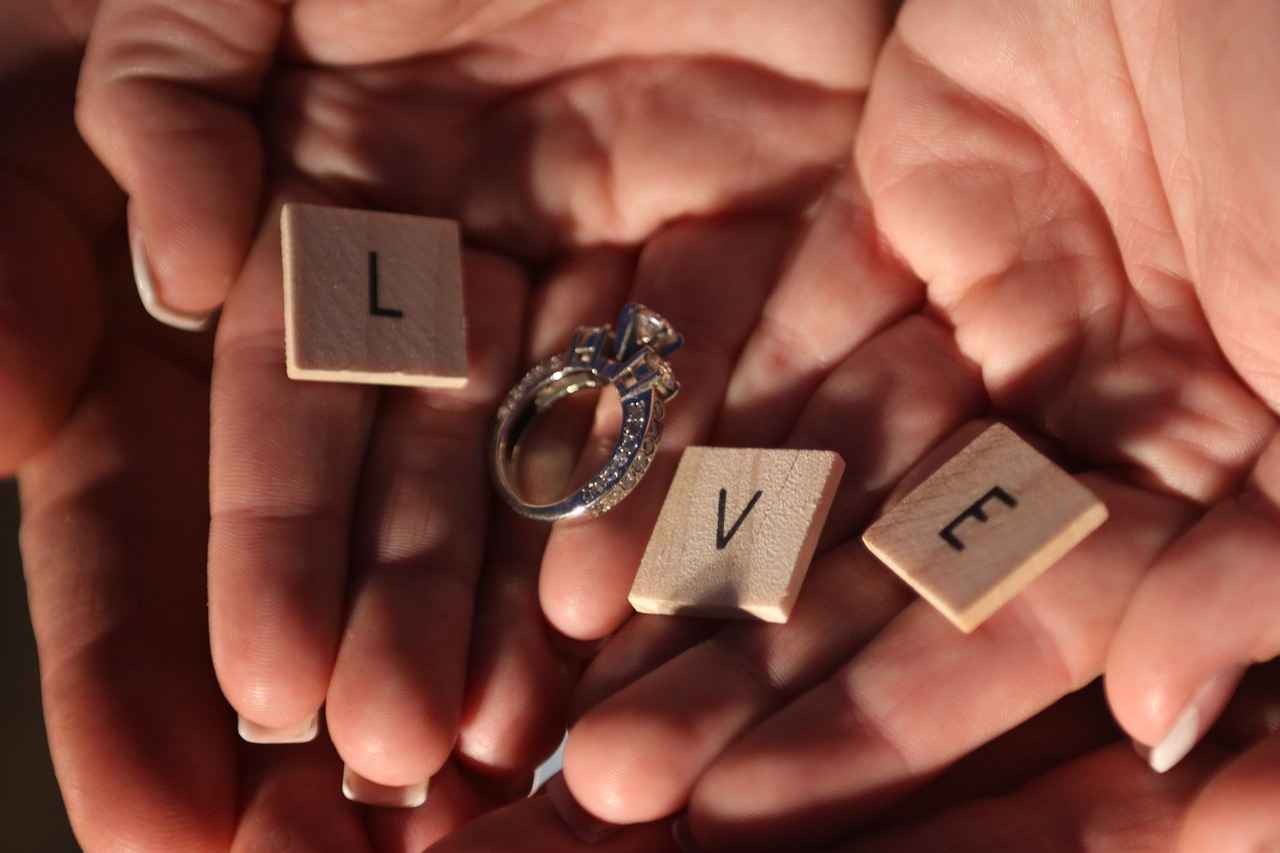
What Tools Do You Need for Jewelry Cleaning?
When it comes to keeping your jewelry in pristine condition, having the right tools is essential. Proper maintenance not only enhances the appearance of your pieces but also extends their lifespan. Below, we outline the essential items you should consider for effective jewelry cleaning.
Investing in the right tools can significantly simplify the jewelry cleaning process. Here are some must-have items that will help you maintain your precious accessories:
- Soft Brushes: A set of soft-bristled brushes is invaluable for cleaning intricate designs. These brushes can reach into crevices and remove dirt without scratching the surface of your jewelry.
- Microfiber Cloths: These cloths are perfect for polishing and buffing your jewelry after cleaning. They are gentle on all types of materials and help to restore shine without leaving lint behind.
- Ultrasonic Cleaners: For a deeper clean, consider an ultrasonic cleaner. This device uses high-frequency sound waves to agitate a cleaning solution, effectively removing dirt and grime. However, be cautious as this method may not be suitable for all jewelry types.
- Jewelry Cleaning Solutions: Opt for a gentle cleaning solution specifically designed for jewelry. Avoid harsh chemicals that can damage delicate materials.
- Polishing Cloths: These cloths are treated with special compounds that help to remove tarnish and restore shine. They are especially useful for silver and gold jewelry.
- Storage Boxes: Proper storage is just as important as cleaning. Organize your jewelry in dedicated boxes or compartments to prevent scratches and tangling.
- Magnifying Glass: A magnifying glass can help you inspect your jewelry for dirt buildup or damage, ensuring you don’t miss any areas that need attention.
Using the right tools is only part of the equation; knowing how to use them effectively is equally important. Here’s a brief guide:
- Soft Brushes: Dip the brush in a mild soap solution and gently scrub the jewelry, focusing on intricate areas where dirt accumulates.
- Microfiber Cloths: After cleaning, use a dry microfiber cloth to buff your jewelry, enhancing its shine.
- Ultrasonic Cleaners: Follow the manufacturer’s instructions for use. Typically, you will fill the tank with a cleaning solution and place your jewelry inside for a short duration.
- Jewelry Cleaning Solutions: Apply the solution as directed, usually with a soft cloth or brush, then rinse thoroughly to remove any residue.
Having the proper tools for jewelry cleaning is crucial for several reasons:
- Prevent Damage: Using inappropriate tools can lead to scratches, tarnishing, and other forms of damage.
- Enhance Longevity: Regular maintenance with the right tools helps to preserve the beauty and integrity of your jewelry.
- Save Time: Efficient cleaning tools can make the process quicker and more effective, allowing you to enjoy your jewelry without worry.
In summary, equipping yourself with the right tools for jewelry cleaning is vital for maintaining the beauty and longevity of your cherished items. With the right approach and tools, you can keep your jewelry looking as stunning as the day you bought it.
Soft Brushes and Cloths
Soft Brushes and Microfiber Cloths: Essential Tools for Jewelry Care
When it comes to maintaining the beauty of your jewelry, investing in high-quality soft brushes and microfiber cloths is crucial. These tools are specifically designed to clean intricate designs and delicate surfaces without causing scratches or damage. Let’s delve deeper into why these tools are indispensable for jewelry cleaning.
Soft brushes, often made from natural or synthetic fibers, are perfect for reaching into the tiny crevices of your jewelry where dirt and grime tend to accumulate. Their gentle bristles ensure that even the most delicate pieces, such as those adorned with intricate filigree or fine gemstones, can be cleaned without risk.
- Gentle Cleaning: Soft brushes effectively remove dirt without scratching surfaces.
- Versatility: They can be used on various materials, including gold, silver, and even costume jewelry.
- Enhanced Reach: The bristles can access hard-to-reach areas that cloths alone might miss.
Microfiber cloths are another essential tool for jewelry maintenance. Their unique structure allows them to trap dirt and oils while being incredibly soft on surfaces. Here’s why they are a must-have:
- Non-Abrasive: Unlike regular cloths, microfiber cloths do not scratch or damage delicate finishes.
- Effective Polishing: They are excellent for giving your jewelry that sparkling finish after cleaning.
- Reusable: Microfiber cloths can be washed and reused, making them an eco-friendly choice.
To get the best results from your soft brushes and microfiber cloths, follow these simple steps:
- Preparation: Gather your jewelry, a bowl of warm soapy water, and your cleaning tools.
- Brushing: Dip the soft brush into the soapy water and gently scrub the jewelry, focusing on intricate areas.
- Wiping: After brushing, use a microfiber cloth to wipe down the piece, removing any remaining soap and dirt.
- Drying: Allow your jewelry to air dry completely before storing it away.
To ensure that your soft brushes and microfiber cloths remain effective, it’s important to keep them clean. Wash microfiber cloths regularly to prevent dirt buildup, and rinse brushes thoroughly after each use. This simple maintenance will prolong their lifespan and effectiveness.
In conclusion, soft brushes and microfiber cloths are essential tools for anyone looking to keep their jewelry in pristine condition. By using these tools properly, you can maintain the beauty and integrity of your cherished pieces for years to come.
Ultrasonic Cleaners
When it comes to cleaning jewelry, the ultrasonic cleaner has gained popularity for its ability to provide a thorough and effective cleaning experience. Utilizing high-frequency sound waves, these devices create microscopic bubbles in a cleaning solution that collapse and produce a scrubbing action. This process is known as cavitation, and it can remove dirt, grime, and tarnish from even the most intricate designs.
Ultrasonic cleaners operate by immersing the jewelry in a suitable cleaning solution, typically water mixed with a mild detergent. The ultrasonic waves generate millions of tiny bubbles that implode, creating a powerful scrubbing effect on the jewelry’s surface. This method is particularly effective for cleaning hard-to-reach areas, such as the crevices of ornate designs, ensuring a deeper clean compared to traditional methods.
- Efficiency: Ultrasonic cleaners can clean multiple pieces of jewelry simultaneously, saving time and effort.
- Thoroughness: The cavitation process effectively removes even the most stubborn dirt and tarnish.
- Ease of Use: Most ultrasonic cleaners are simple to operate, requiring minimal setup.
While ultrasonic cleaners offer significant advantages, it is crucial to note that they may not be suitable for all types of jewelry. Certain materials and settings can be damaged by the intense vibrations and cleaning solutions. For example:
- Soft Gemstones: Stones like opal, pearl, and turquoise can be sensitive to ultrasonic cleaning and may suffer damage.
- Loose Stones: If your jewelry has stones that are not securely set, the vibrations can dislodge them.
- Delicate Metals: Some soft metals, such as gold and silver, may scratch or become damaged under ultrasonic cleaning.
To ensure safe and effective cleaning, follow these guidelines:
- Check Material Compatibility: Always verify whether your jewelry is safe for ultrasonic cleaning.
- Select the Right Cleaning Solution: Use a mild detergent specifically designed for ultrasonic cleaners.
- Follow Manufacturer Instructions: Adhere to the guidelines provided with your ultrasonic cleaner for optimal results.
If you have jewelry that is not suitable for ultrasonic cleaning, consider these alternatives:
- Soap and Water: A gentle soap solution can clean many types of jewelry without risk.
- Professional Cleaning: For valuable or delicate pieces, seeking a professional jeweler’s services is advisable.
- Baking Soda Paste: This natural cleaner can effectively remove tarnish from silver without harsh chemicals.
In summary, while ultrasonic cleaners can provide a superior cleaning experience for many jewelry types, it is essential to use them with caution. Always consider the material of your jewelry and follow best practices to avoid potential damage. By understanding the capabilities and limitations of ultrasonic cleaning, you can keep your jewelry sparkling and beautiful for years to come.
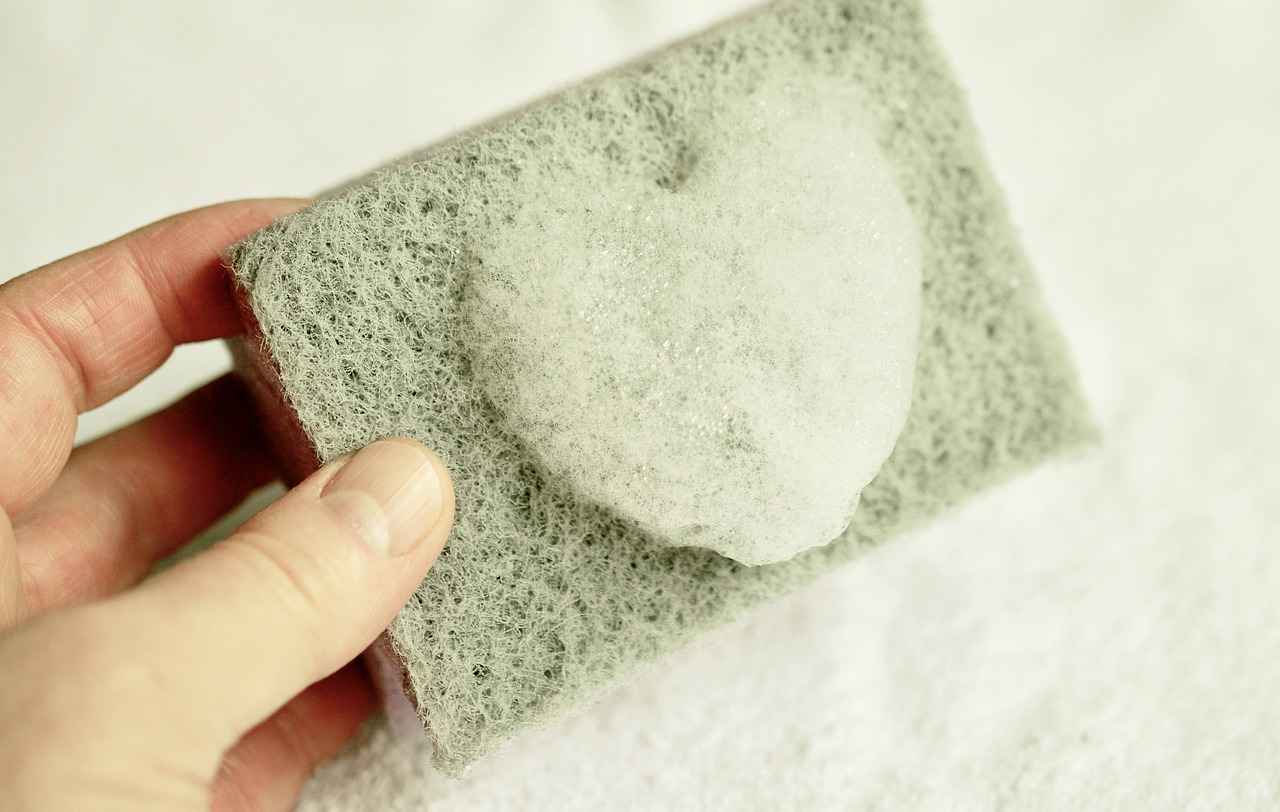
Which Jewelry Materials Require Special Care?
When it comes to jewelry, not all materials are created equal. Each type of jewelry has its own set of cleaning requirements that reflect its unique properties. Understanding these differences is crucial to maintaining the beauty and longevity of your cherished pieces. This section will delve into the various materials used in jewelry and the specific care they require.
Jewelry is often a significant investment, both emotionally and financially. Therefore, knowing how to care for different materials is essential. Here’s a breakdown of common jewelry materials and their specific cleaning needs:
- Gold Jewelry
- Gold is relatively durable but can still scratch. Use a soft cloth for regular cleaning and avoid abrasive materials.
- For deeper cleaning, a mixture of mild soap and warm water is effective. Soak for a few minutes and gently scrub with a soft brush.
- Silver Jewelry
- Silver tarnishes over time due to exposure to air and moisture. Regular polishing with a silver cloth can help maintain its shine.
- A baking soda paste can effectively remove tarnish. Apply it gently, then rinse thoroughly to avoid residue buildup.
- Gemstones
- Different gemstones have varying hardness levels. For example, diamonds are hard, while opals are softer and require more care.
- Use a gentle soap solution for cleaning, and avoid ultrasonic cleaners for softer stones, as they can be damaged.
- Pearls
- Pearls are delicate and should never be soaked. Instead, wipe them with a damp cloth after wearing to remove oils and dirt.
- Store pearls separately from other jewelry to prevent scratching and keep them in a soft pouch or lined box.
- Costume Jewelry
- Costume jewelry often contains base metals and synthetic stones. Avoid exposing them to water and harsh chemicals.
- Use a soft, dry cloth for cleaning, and store them in a dry place to prevent tarnishing.
Understanding the specific cleaning needs of each type of jewelry material is vital. By following these guidelines, you can ensure that your jewelry remains as stunning as the day you bought it. Regular maintenance not only enhances the appearance but also extends the life of your favorite pieces.
Moreover, always remember to check for any loose stones or damaged settings before cleaning, as this can help avoid further complications. By being proactive about your jewelry care, you can enjoy your pieces for years to come.
Cleaning Gold and Silver Jewelry
Cleaning your jewelry is essential to maintain its beauty and longevity. Among the various types of jewelry, gold and silver are particularly popular due to their timeless appeal. However, to keep these precious metals looking their best, it’s crucial to employ the right cleaning methods that avoid scratches and tarnishing.
Regular cleaning not only enhances the appearance of your jewelry but also prevents buildup that can lead to tarnishing. Over time, dirt, oils from your skin, and environmental factors can dull the shine of your gold and silver pieces. By cleaning them frequently, you can ensure that they remain in excellent condition.
There are several effective methods for cleaning gold and silver jewelry. Here are some of the most recommended techniques:
- Soap and Water Solution: This is one of the simplest methods. Mix a few drops of mild dish soap in a bowl of lukewarm water. Soak your jewelry for about 15-20 minutes, then gently scrub with a soft toothbrush to remove any dirt.
- Baking Soda Paste: For silver jewelry, a paste made from baking soda and water can effectively remove tarnish. Apply the paste with a soft cloth, rub gently, and rinse with water.
- Commercial Jewelry Cleaners: There are many products specifically designed for cleaning jewelry, which can be very effective. Ensure to read the instructions carefully and check if the cleaner is suitable for your jewelry.
Having the right tools can make the cleaning process much easier and safer for your jewelry:
- Soft Brushes: A soft-bristled toothbrush or a makeup brush can help clean intricate designs without scratching the surface.
- Microfiber Cloths: These are excellent for polishing and drying your jewelry without leaving scratches.
- Jewelry Cleaning Kits: Investing in a complete jewelry cleaning kit can provide you with all the necessary tools and solutions for effective cleaning.
While cleaning gold and silver jewelry may seem straightforward, there are some common pitfalls to avoid:
- Avoid Harsh Chemicals: Chemicals found in household cleaners can damage the finish of your jewelry. Always opt for gentle, jewelry-specific cleaners.
- Don’t Overdo It: Regular cleaning is important, but over-cleaning can lead to wear and tear. Aim for a balance.
- Be Cautious with Stones: If your jewelry features gemstones, ensure that the cleaning method is safe for the specific type of stone.
Proper storage is just as important as cleaning. Here are some tips to keep your jewelry looking great:
- Store Separately: Keep your gold and silver pieces in separate compartments to avoid scratches.
- Use Anti-Tarnish Bags: These bags can help prevent tarnishing, especially for silver jewelry.
- Keep Away from Moisture: Store your jewelry in a cool, dry place to minimize the risk of tarnishing.
If your jewelry is heavily tarnished or damaged, it may be time to consult a professional jeweler. They have the tools and expertise to restore your pieces without causing further damage.
Cleaning your gold and silver jewelry is an essential part of maintaining its beauty. By following the right methods and avoiding common mistakes, you can ensure your precious pieces remain as stunning as the day you bought them.
Handling Gemstones and Pearls
requires special attention due to their delicate nature. These precious materials, while stunning, can be easily damaged if not cared for properly. Understanding the best practices for cleaning and maintaining these items is essential for preserving their beauty and longevity.
Gemstones and pearls are naturally softer than many other materials used in jewelry. For instance, pearls are organic gems formed from mollusks, making them sensitive to chemicals, heat, and physical abrasion. Similarly, certain gemstones, such as opals and turquoise, can be porous and prone to scratching. This is why it’s crucial to adopt a gentle cleaning approach to avoid irreversible damage.
- Soft Cloth Wipe: For quick maintenance, use a soft, lint-free cloth to gently wipe pearls and gemstones after each wear. This removes oils and dirt, keeping them looking fresh.
- Warm Soapy Water: For a deeper clean, prepare a solution of warm water and a few drops of mild soap. Soak your jewelry for a few minutes, then use a soft brush to gently scrub around the stones and settings. Rinse thoroughly and pat dry with a soft cloth.
- Avoid Ultrasonic Cleaners: While these devices can be effective for some jewelry types, they are generally not safe for gemstones and pearls. The vibrations can loosen stones or damage the surface of pearls.
To ensure the longevity of your gemstones and pearls, avoid the following common mistakes:
- Using Harsh Chemicals: Avoid bleach, ammonia, or other strong cleaning agents. These can cause discoloration and damage the surface.
- Skipping Regular Cleaning: Neglecting to clean your jewelry can lead to buildup of dirt and oils, which can dull the shine of your pieces.
- Storing Improperly: Always store pearls and gemstones separately from other jewelry to prevent scratching. Use soft pouches or lined boxes to protect them.
It is recommended to clean your gemstones and pearls every few weeks or after wearing them, especially if you wear them frequently. This helps maintain their luster and prevents buildup. Additionally, consider professional cleaning once a year to ensure they are in optimal condition.
If you notice any signs of damage, such as loose stones or significant tarnishing, it’s wise to consult a professional jeweler. They can provide specialized cleaning and repairs that can restore your pieces to their original beauty.
In conclusion, handling gemstones and pearls with care is essential for preserving their beauty. By following the right cleaning methods and avoiding common mistakes, you can keep your cherished jewelry looking stunning for years to come.

What Mistakes Should You Avoid When Cleaning Jewelry?
Avoiding common mistakes is crucial to maintaining the integrity of your jewelry. Here are pitfalls to watch out for during the cleaning process.
Cleaning your jewelry at home can be a rewarding experience, but it’s essential to do it correctly to avoid damaging your precious items. Here are some common mistakes to steer clear of:
- Using Harsh Chemicals: Many people mistakenly believe that stronger cleaning agents will yield better results. However, harsh chemicals can corrode metals and dull the finish of gemstones. Always opt for gentle cleaning solutions specifically designed for jewelry.
- Neglecting to Test Cleaning Methods: Before applying any cleaning method, it’s wise to test it on a small, inconspicuous area. This precaution can help you avoid unexpected reactions that could damage your jewelry.
- Ignoring Specific Material Care: Different materials require unique cleaning approaches. For instance, pearls and opals are sensitive to moisture and should be cleaned with a dry cloth rather than submerged in water. Understanding the specific needs of each material is vital.
- Overusing Tools: While brushes and cloths are useful, over-scrubbing can scratch delicate surfaces. Use soft brushes designed for jewelry and apply light pressure during cleaning to avoid unnecessary wear.
- Skipping Regular Maintenance: Regular cleaning prevents the buildup of dirt and tarnish. Skipping this step can lead to significant restoration efforts later on. Establish a cleaning routine based on how often you wear your jewelry.
- Using the Wrong Water Temperature: When cleaning with water, always use lukewarm water. Hot water can cause certain stones to crack or become discolored, while cold water may not effectively remove grime.
- Failing to Dry Properly: After cleaning, it’s crucial to dry your jewelry thoroughly. Moisture left on jewelry can lead to tarnishing, especially for silver pieces. Use a soft, lint-free cloth to ensure all moisture is removed.
- Not Storing Properly: After cleaning, improper storage can undo your hard work. Store your jewelry in a cool, dry place, preferably in anti-tarnish pouches or compartments to prevent scratching and tarnishing.
By avoiding these common mistakes, you can ensure that your jewelry remains in excellent condition. Remember, proper care and maintenance not only enhance the beauty of your pieces but also extend their lifespan. Taking the time to clean your jewelry correctly will keep it sparkling and looking new for years to come.
Using Harsh Chemicals
in jewelry cleaning can lead to devastating consequences. While the allure of quick and effective cleaning solutions may tempt you, it’s crucial to understand the risks involved. Many household cleaners contain abrasive agents and strong chemicals that can tarnish metals, dull gemstones, and even cause irreversible damage to your beloved pieces.
Harsh chemicals can react negatively with the materials in your jewelry. For instance, chlorine, often found in bleach and cleaning products, can weaken gold and silver, leading to breakage. Similarly, ammonia can cloud the surface of gemstones, diminishing their natural beauty.
Opting for gentle cleaning solutions not only preserves the shine and integrity of your jewelry but also extends its lifespan. Natural alternatives, such as a mixture of mild soap and water or a baking soda paste, effectively clean without risking damage. These methods are safe for most materials, including gold, silver, and various gemstones.
- Look for products labeled as non-toxic and biodegradable.
- Avoid anything containing acids or strong solvents.
- Choose cleaners specifically designed for jewelry.
Here are some tried-and-true methods for cleaning your jewelry safely:
- Soap and Water: Mix a few drops of mild dish soap in lukewarm water. Soak your jewelry for a few minutes, then gently scrub with a soft-bristled brush.
- Baking Soda Paste: Create a paste with baking soda and water. Apply it to tarnished areas, let it sit for a few minutes, and rinse with warm water.
- Vinegar Solution: For silver jewelry, a solution of vinegar and baking soda can help remove tarnish. Soak for a few hours, then rinse thoroughly.
To ensure the longevity of your jewelry, avoid the following:
- Do not use toothpaste or other abrasive cleaners.
- Avoid ultrasonic cleaners for delicate gemstones like pearls or opals, as they can cause damage.
- Never mix different cleaning solutions, as chemical reactions can occur.
After cleaning, proper maintenance is key. Store your jewelry in a dry, cool place, preferably in anti-tarnish pouches or lined boxes. Regular maintenance checks can help identify any issues before they escalate, ensuring your pieces remain in pristine condition.
In summary, while the temptation to use harsh chemicals may be strong, the potential risks far outweigh the benefits. By choosing gentle cleaning methods and products, you can maintain the beauty and integrity of your jewelry for years to come.
Skipping Regular Maintenance
Jewelry is not just an accessory; it often carries sentimental value and represents significant milestones in our lives. However, neglecting regular maintenance can lead to a host of problems, including tarnishing and buildup that detracts from its beauty. Establishing a routine cleaning schedule is essential for keeping your precious items in pristine condition.
Regular maintenance is crucial for several reasons:
- Preservation of Value: Jewelry can be a significant investment. Regular cleaning helps maintain its value over time.
- Prevention of Damage: Dirt and grime can cause scratches and other damage, especially to delicate pieces.
- Enhanced Appearance: Regular cleaning keeps your jewelry looking its best, ensuring it sparkles and shines.
If you skip regular cleaning, you may notice:
- Tarnishing: Metals like silver and gold can tarnish over time, leading to a dull appearance.
- Buildup of Dirt: Dirt and oils from your skin can accumulate, making it difficult to restore the jewelry’s original luster.
- Potential Damage: Neglecting cleaning can lead to irreversible damage, especially for pieces with delicate stones.
The frequency of cleaning depends on how often you wear your jewelry:
- Daily Wear: For items worn daily, such as wedding bands or earrings, consider cleaning them every few weeks.
- Occasional Wear: For pieces worn less frequently, a thorough clean before wearing can suffice.
Establishing a regular cleaning routine can be simple and effective:
- Gather Supplies: Use mild soap, warm water, and a soft brush for general cleaning.
- Soak: Soak your jewelry in the soapy water for a few minutes to loosen dirt.
- Gently Scrub: Use a soft brush to gently scrub intricate designs and settings.
- Rinse and Dry: Rinse thoroughly with clean water and dry with a soft cloth.
Proper storage is just as important as cleaning:
- Separate Compartments: Store different types of jewelry separately to prevent scratches.
- Anti-Tarnish Solutions: Consider using anti-tarnish pouches for silver jewelry.
While regular maintenance is essential, some situations call for professional attention:
- Heavily Tarnished Items: If your jewelry is significantly tarnished, professional cleaning can restore its shine.
- Repair Needs: For broken pieces or those needing stone replacement, seeking a jeweler’s expertise is crucial.
In conclusion, establishing a regular cleaning routine for your jewelry not only enhances its appearance but also extends its lifespan. By taking the time to care for your precious items, you ensure they remain beautiful and cherished for years to come.
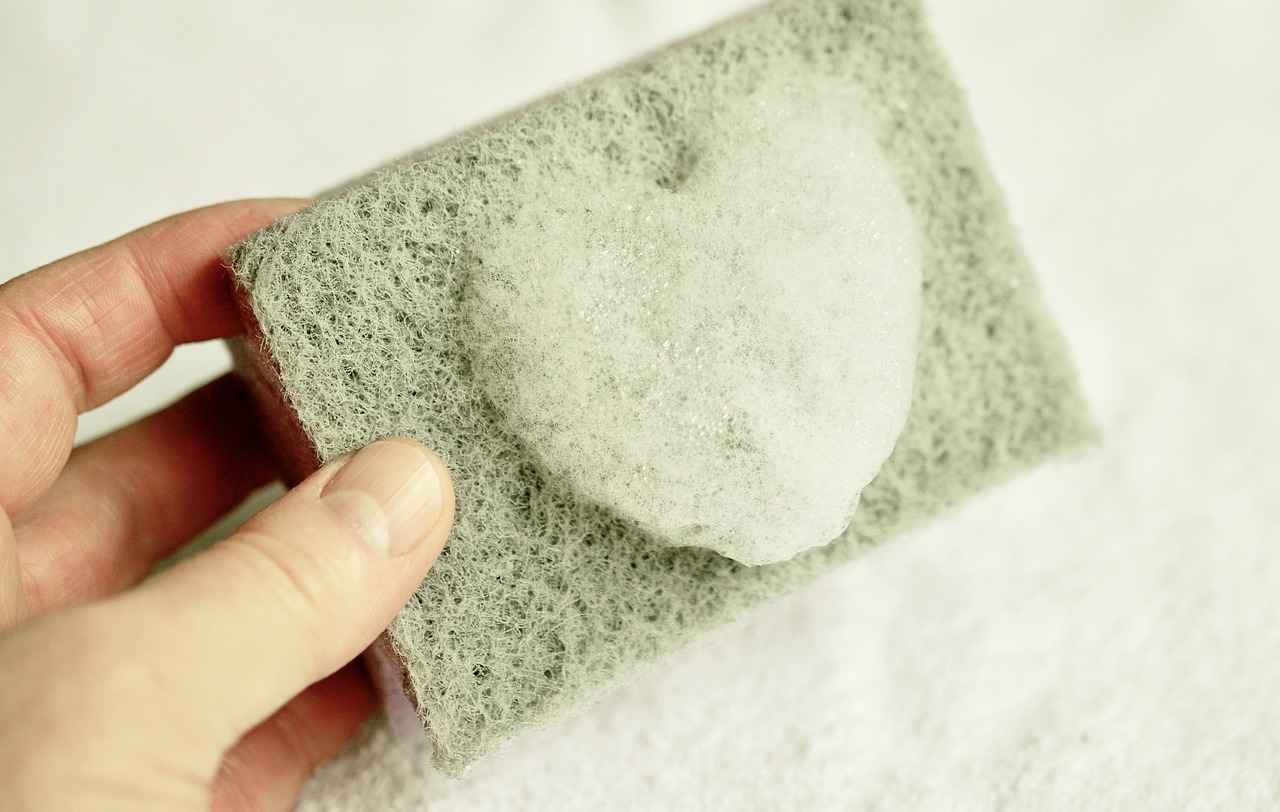
How to Store Jewelry Properly After Cleaning?
Proper storage after cleaning is essential for maintaining your jewelry’s shine and preventing damage. Jewelry is not only a fashion statement but also holds sentimental value, making it crucial to care for it properly. Here are tips for effective jewelry storage that will help you keep your pieces looking their best.
Understanding the importance of proper storage can help extend the life of your jewelry. Improper storage can lead to scratches, tarnishing, and loss of luster. By taking a few simple steps, you can ensure that your jewelry remains in pristine condition.
- Use Anti-Tarnish Materials: Consider using anti-tarnish pouches or cloths, especially for silver jewelry. These materials can significantly reduce the likelihood of tarnishing, keeping your pieces shiny.
- Store Individually: To prevent scratches and tangling, store each piece of jewelry in its own compartment or pouch. This is particularly important for delicate items such as necklaces and bracelets.
- Avoid Humidity: Store your jewelry in a dry environment. Humidity can accelerate tarnishing and cause damage to certain materials, such as pearls and gemstones.
- Use a Jewelry Box: Invest in a quality jewelry box with separate compartments. This will not only keep your jewelry organized but also protect it from dust and environmental factors.
While there are many effective storage methods, there are also common mistakes to avoid:
- Don’t Store in Direct Sunlight: Prolonged exposure to sunlight can fade gemstones and damage certain materials. Choose a cool, dark place for storage.
- Avoid Storing in the Bathroom: The bathroom is often humid, which can be detrimental to your jewelry. Opt for a different room with stable conditions.
- Don’t Overcrowd Storage Spaces: Overcrowding can lead to scratches and tangling. Ensure there’s enough space for each piece to be stored safely.
Organization is key to maintaining your jewelry collection. Here are some tips:
- Sort by Type: Group similar items together, such as rings, necklaces, and earrings. This makes it easier to find what you need without rummaging through everything.
- Label Your Storage: If you have multiple boxes or compartments, consider labeling them. This will save time when searching for specific pieces.
- Regularly Review Your Collection: Periodically check your jewelry for any signs of damage or tarnishing. This allows you to address issues before they worsen.
Yes, there are several DIY solutions you can utilize to enhance your jewelry storage:
- Use Silica Gel Packs: These can help absorb moisture in your jewelry box, providing an extra layer of protection against humidity.
- Repurpose Household Items: Consider using small bowls or trays to keep items organized. You can also use ice cube trays for rings and earrings.
In conclusion, proper storage after cleaning is vital for maintaining the beauty and longevity of your jewelry. By following these tips and avoiding common mistakes, you can ensure that your precious pieces remain in excellent condition for years to come. Remember, a little care goes a long way in preserving your jewelry’s shine and integrity.
Using Anti-Tarnish Pouches
When it comes to preserving the beauty of your silver jewelry, anti-tarnish pouches are an essential investment. These specialized pouches are designed to protect your precious items from tarnishing, which can occur due to exposure to air, moisture, and other environmental factors. By storing your jewelry in these pouches, you can ensure that it maintains its brilliance and shine for years to come.
How Do Anti-Tarnish Pouches Work?
Anti-tarnish pouches contain materials that absorb moisture and neutralize tarnishing agents in the air. This helps to create a protective barrier around your jewelry, significantly reducing the chances of tarnish formation. The pouches are typically made from breathable fabrics that allow air circulation while keeping harmful elements at bay. This means that your jewelry can be stored safely without the risk of developing unsightly tarnish.
Why Should You Use Anti-Tarnish Pouches?
- Long-lasting Protection: By using anti-tarnish pouches, you can extend the lifespan of your silver jewelry, ensuring it looks as good as new.
- Convenience: These pouches are lightweight and portable, making them easy to use at home or while traveling.
- Cost-Effective: Investing in anti-tarnish pouches is a small price to pay compared to the potential costs of restoring tarnished jewelry.
How to Properly Store Jewelry in Anti-Tarnish Pouches
To maximize the effectiveness of anti-tarnish pouches, follow these simple steps:
- Clean Your Jewelry: Before storing, ensure your jewelry is clean and dry. Use a gentle cleaning method suitable for silver.
- Place Jewelry in the Pouch: Carefully place each piece in the pouch, avoiding overcrowding to prevent scratches.
- Seal the Pouch: Make sure the pouch is securely closed to keep out moisture and air.
- Store in a Cool, Dry Place: Keep the pouches in a location that is not exposed to direct sunlight or humidity.
How Often Should You Replace Anti-Tarnish Pouches?
To ensure optimal performance, it is recommended to replace anti-tarnish pouches every 6 to 12 months, depending on usage and environmental conditions. Signs that a pouch may need replacing include visible wear, discoloration, or a noticeable change in smell. Regularly checking the condition of your pouches can help maintain the effectiveness of your jewelry storage.
Conclusion
In summary, anti-tarnish pouches are a simple yet effective solution for protecting your silver jewelry from tarnishing. By understanding how they work and following proper storage techniques, you can enjoy your beautiful pieces without the worry of tarnish ruining their appearance. Make anti-tarnish pouches a part of your jewelry care routine, and experience the long-lasting benefits they provide.
Organizing Jewelry by Type
When it comes to jewelry, organization is key to ensuring that your cherished pieces remain in pristine condition. can significantly reduce the risk of scratching and tangling, which often occurs when different materials are stored together. This article will explore effective strategies for organizing your jewelry collection, ensuring each piece is easily accessible and well-protected.
Keeping your jewelry organized is not just about aesthetics; it plays a vital role in preserving the quality of your items. When jewelry is stored haphazardly, it can lead to scratches, knots, and even breakage. By categorizing your pieces, you can prevent damage and make it easier to find what you need when dressing up for an occasion.
- Use Separate Compartments: Invest in jewelry boxes or organizers with multiple compartments. This allows you to store items like necklaces, bracelets, and earrings separately, preventing them from tangling.
- Label Your Storage: Consider labeling compartments or boxes based on jewelry type or material. This simple step can save you time and frustration when searching for specific pieces.
- Utilize Drawers and Trays: For larger collections, using shallow drawers or trays can be effective. You can lay out your jewelry flat, making it visible and reducing the risk of damage.
Different materials require different care and storage methods. Here are some tips for organizing various types of jewelry:
- Gold and Silver: Store these metals in anti-tarnish pouches or lined boxes to prevent tarnishing. Ensure they are separated to avoid scratching.
- Gemstones: Delicate stones should be stored in soft cloth pouches to protect them from scratches. Avoid placing them in direct contact with harder materials.
- Pearls: Pearls are especially sensitive and should be stored separately. Use a soft cloth to wrap them and keep them in a cool, dry place.
Maintaining an organized jewelry collection requires ongoing effort. Here are some practical tips:
- Regularly Review Your Collection: Periodically go through your jewelry to assess what you have. This not only helps keep things organized but also allows you to identify pieces that may need cleaning or repair.
- Implement a Cleaning Routine: After wearing your jewelry, make it a habit to clean it before storing it away. This helps prevent buildup and keeps your pieces looking their best.
- Be Mindful of Storage Conditions: Store your jewelry in a cool, dry place away from direct sunlight. This helps in maintaining the integrity of the materials.
Absolutely! There are many DIY solutions for organizing jewelry that can be both cost-effective and stylish. Here are a few ideas:
- Repurposed Containers: Use small glass jars or decorative bowls to store earrings or rings. This not only organizes but also adds a decorative touch to your space.
- Wall-Mounted Displays: Create a wall-mounted jewelry display using hooks or a pegboard. This keeps your jewelry visible and accessible while serving as wall art.
In conclusion, organizing your jewelry by type is essential for maintaining its beauty and longevity. By following these tips and strategies, you can create an organized, accessible collection that keeps your precious items safe from damage. Remember, a little effort in organization can go a long way in preserving the elegance of your jewelry.
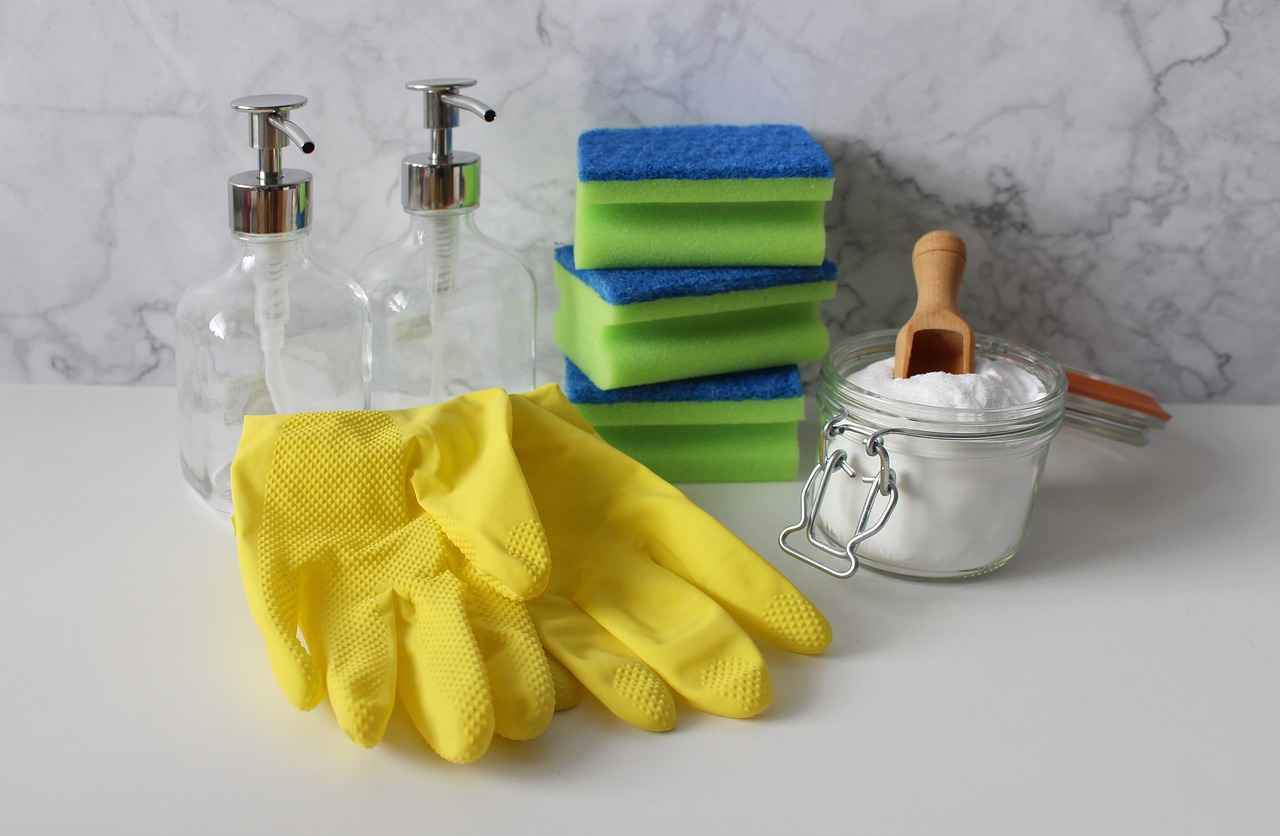
When Should You Seek Professional Cleaning Services?
Cleaning your jewelry at home can be a rewarding task, but there are times when professional intervention is necessary. Understanding when to seek professional cleaning services can help protect your valuable pieces from potential damage. Below, we explore the scenarios where professional help is not just beneficial but essential.
While regular at-home cleaning methods can keep your jewelry looking good, they may not address deeper issues such as heavy tarnishing or intricate designs that require special attention. Professionals possess specialized tools and expertise to handle delicate items, ensuring a thorough clean without risk of damage.
- Visible Tarnish or Dirt Buildup: If your jewelry looks dull or has noticeable tarnish that home methods fail to remove, it’s time to consult a professional.
- Loose Stones: If you notice any stones that appear loose or misaligned, professional repair is crucial to prevent loss.
- Intricate Designs: Jewelry with detailed engravings or settings can be challenging to clean without causing scratches or damage. Professionals have the right tools for such tasks.
- Heavily Worn Pieces: Items that you wear frequently may accumulate more grime. If they are showing signs of wear, a professional clean can restore their original luster.
When you take your jewelry to a professional, they typically follow a systematic approach:
1. Inspection: Assess the condition of the jewelry.2. Cleaning: Use ultrasonic cleaners or steam cleaning for a deep clean.3. Repair: Address any loose stones or damaged settings.4. Polishing: Restore shine and finish.
This comprehensive process ensures that your jewelry is not only clean but also safe from potential damage that can occur during improper cleaning at home.
- Expertise: Professionals are trained to handle various materials, from gold and silver to precious gemstones.
- Specialized Equipment: Access to tools that are not typically available at home, such as ultrasonic cleaners, allows for a more thorough clean.
- Restoration Services: Many jewelers can also provide restoration services for damaged pieces, ensuring they look as good as new.
The frequency of professional cleaning largely depends on how often you wear your jewelry. For pieces worn daily, consider professional cleaning every 6 to 12 months. For less frequently worn items, annual cleaning may suffice. Regular maintenance helps in identifying any issues early, preventing costly repairs down the line.
In summary, while home cleaning can maintain your jewelry, knowing when to seek professional help is crucial for preserving its beauty and integrity. By recognizing the signs that indicate the need for professional cleaning, you can ensure that your cherished pieces remain in excellent condition for years to come.
Restoring Heavily Tarnished Items
can seem like a daunting task, but with the right approach, you can breathe new life into your cherished jewelry. Over time, exposure to air, moisture, and chemicals can cause metals like silver and gold to tarnish, losing their luster and appeal. If you find yourself facing this issue, professional cleaning services can be your best ally.
When jewelry becomes heavily tarnished, it often requires more than just a simple at-home cleaning. Professional jewelers possess specialized tools and expertise that allow them to restore the original beauty of your pieces safely. They can effectively remove tarnish without scratching or damaging delicate surfaces, which is a risk when using improper cleaning methods at home.
Why Choose Professional Cleaning? The primary advantage of seeking professional help is the assurance of quality and safety. Experts can assess the condition of your jewelry and determine the best cleaning method. They understand the unique properties of different metals and gemstones, which is crucial when dealing with intricate designs or fragile materials.
- Advanced Equipment: Professionals utilize ultrasonic cleaners and steam cleaning devices that can penetrate hard-to-reach areas, ensuring a thorough clean.
- Expert Knowledge: Jewelers are trained to identify the best techniques for various types of jewelry, minimizing the risk of damage.
- Repairs and Restoration: If your jewelry has sustained damage, such as loose stones or broken clasps, professionals can carry out necessary repairs while cleaning.
Many people hesitate to seek professional cleaning due to concerns about cost. However, consider the value of your jewelry and the potential expense of replacing damaged items. Investing in professional cleaning can ultimately save you money in the long run.
Signs You Need Professional Cleaning: If your jewelry shows significant discoloration, stubborn stains, or if you notice a buildup of grime that home remedies can’t tackle, it’s time to consult a professional. Additionally, if your pieces have sentimental value or are antique, expert care is essential to preserve their integrity.
In conclusion, while home cleaning methods can be effective for routine maintenance, they may not suffice for heavily tarnished or damaged items. Seeking professional assistance not only restores the beauty of your jewelry but also ensures its longevity. Remember, your treasured pieces deserve the best care possible.
Repairing Damaged Pieces
Jewelry is not just an accessory; it often carries sentimental value and memories. However, accidents happen, and pieces can become damaged over time. Whether it’s a broken chain, a missing stone, or a bent ring, knowing how to address these issues is crucial for preservation.
Repairing damaged jewelry is essential for several reasons. First, it helps maintain the sentimental value of the piece, allowing you to continue cherishing it. Second, it prevents further damage that could lead to more costly repairs or even loss of the item. Finally, a repaired piece can restore its original beauty, making it an item you can wear with pride.
Common types of jewelry repairs include:
- Stone Replacement: Losing a stone can be disheartening. A professional jeweler can replace missing stones, ensuring the integrity of the piece remains intact.
- Chain Repairs: Broken chains are frequent, especially in necklaces and bracelets. A jeweler can expertly reconnect or replace links.
- Ring Resizing: Whether your ring has become too tight or too loose, resizing is a common service offered by jewelers.
- Soldering: Broken clasps or connections can be soldered back together, restoring functionality and aesthetics.
Finding a qualified jeweler is crucial for effective repairs. Here are some tips:
- Check Reviews: Look for customer reviews and testimonials to gauge the jeweler’s reputation.
- Ask About Experience: Ensure the jeweler has experience with the specific type of repair you need.
- Request a Quote: Before agreeing to repairs, ask for an estimate to avoid unexpected costs.
- Verify Credentials: A reputable jeweler should have certifications or affiliations with recognized organizations.
When you take your jewelry to a professional, the repair process generally includes the following steps:
- Assessment: The jeweler will assess the damage and discuss potential repair options with you.
- Repair Work: Depending on the complexity, repairs may take from a few hours to several weeks.
- Quality Check: After repairs, the jeweler should conduct a quality check to ensure everything is secure and functional.
- Care Instructions: You may receive care instructions to help maintain the repaired piece.
Once your jewelry is repaired, it’s essential to take steps to maintain it:
- Regular Cleaning: Clean your jewelry regularly to prevent buildup that can lead to damage.
- Avoid Harsh Chemicals: Keep your jewelry away from harsh cleaning agents that can damage metals and stones.
- Proper Storage: Store your jewelry in a safe place, ideally in a soft pouch or a jewelry box with compartments.
In conclusion, repairing damaged jewelry is not only about restoring a physical item; it’s about preserving memories and maintaining the beauty of pieces that hold significant value. By seeking professional help and following maintenance tips, you can ensure that your treasured items remain in excellent condition for years to come.
Frequently Asked Questions
- How often should I clean my jewelry?
It’s a good idea to clean your jewelry regularly, ideally every few weeks. This helps prevent buildup and keeps your pieces looking their best.
- Can I use vinegar to clean my jewelry?
Vinegar can be effective for some metals, but it’s best to avoid it on delicate gemstones and pearls. Always test on a small area first!
- Is it safe to use toothpaste for cleaning jewelry?
While some people swear by toothpaste, it can be too abrasive for softer metals and stones. Stick to gentler methods for the best results.
- What should I do if my jewelry is heavily tarnished?
If your jewelry is heavily tarnished, consider seeking professional cleaning services. They have the tools and expertise to restore your pieces without damage.
- How should I store my jewelry after cleaning?
Store your jewelry in anti-tarnish pouches or separate compartments to prevent scratching and tangling. This will help maintain their shine!

